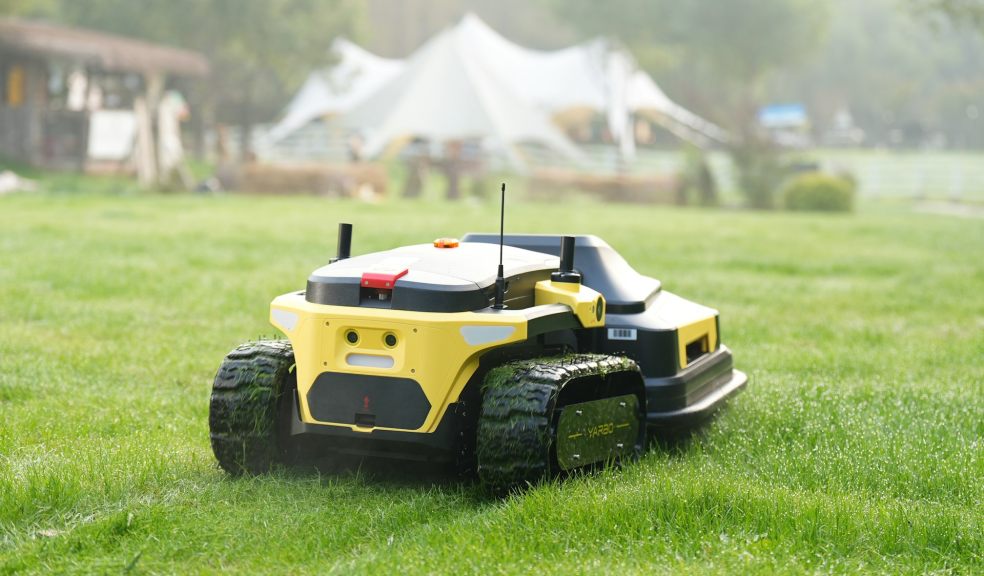
Commercial and Large-Scale Use of Virtual Boundary Robotic Mowers
In recent years, robotic mowing technology has advanced from being a novelty for homeowners to a serious solution for professional groundskeeping. The arrival of virtual boundary systems — which eliminate the need for buried perimeter wires — has revolutionised how large-scale and commercial landscapes are maintained. From golf courses and sports fields to business parks and estates, these high-performance machines are transforming outdoor management with precision, efficiency, and minimal human intervention. Ron Smith, a leading name in garden and grounds machinery, has observed how this innovation is quickly becoming an essential investment for professionals managing extensive green spaces.
Traditional robotic mowers required time-consuming installations involving boundary wires laid around every mowing zone. While effective, this setup limited flexibility and made large or evolving sites challenging to manage. Virtual boundary mowers, however, use advanced GPS and RTK (Real-Time Kinematic) positioning to define mowing zones digitally. The result is a system that can be installed and reconfigured in minutes rather than days. This flexibility is invaluable for commercial users whose grounds may frequently change layout — such as venues hosting outdoor events, training pitches, or landscaped corporate campuses.
For businesses, efficiency and cost savings are the most immediate benefits. Once programmed, virtual boundary mowers operate autonomously, maintaining a consistent grass height without the need for manual labour. This drastically reduces time and workforce requirements while keeping grounds immaculate at all times. Over a single growing season, the difference in labour hours can translate to substantial financial savings — particularly for organisations maintaining multiple sites. Moreover, robotic mowers work quietly and efficiently, meaning maintenance can continue during operating hours without disruption to staff or visitors.
The precision of modern robotic mowers makes them ideal for professional turf management. Thanks to RTK-level accuracy, the machines can maintain exact mowing patterns within a few centimetres of precision. This level of consistency ensures even wear across large lawns, improves grass health, and eliminates the patchy appearance sometimes caused by traditional machinery. For sports pitches, this translates into perfectly even playing surfaces, while for hotel grounds or parks, it means a consistently neat aesthetic that enhances the site’s appearance year-round.
Another reason virtual boundary mowers are proving so effective in commercial environments is their adaptability. Whether managing rolling landscapes, segmented zones, or large open fields, these machines can handle diverse terrain and conditions. Multi-zone programming allows operators to set different mowing schedules for specific areas, while sensors and adaptive drive systems help the mower navigate slopes, obstacles, and varying grass densities. Some models even integrate weather sensors to delay mowing during rain or wet conditions, protecting the turf from damage and ensuring optimal results.
Sustainability is also a major driver behind the adoption of robotic mowing on a larger scale. Battery-powered mowers produce zero direct emissions and consume far less energy than petrol ride-on models. This makes them ideal for organisations pursuing environmental targets or certifications such as ISO 14001. In addition, the fine clippings left by robotic mowers act as a natural mulch, feeding the soil and reducing the need for fertilisers. Over time, this approach fosters stronger, greener turf while aligning with eco-conscious business practices.
For estate managers and groundskeeping teams, maintenance simplicity is another key advantage. Because virtual boundary mowers have fewer mechanical components and no wires to damage, downtime is minimal. They require only periodic cleaning, blade replacement, and software updates to remain in top condition. Remote diagnostics and tracking features mean that maintenance can often be managed off-site, reducing travel time and allowing teams to monitor multiple machines simultaneously.
Security is another consideration that’s been well addressed in modern systems. Many virtual boundary mowers are equipped with GPS tracking and PIN protection, making them extremely difficult to steal. If a mower leaves its designated area, an alert is sent instantly, allowing operators to locate it through a connected app. This level of oversight is particularly valuable for large commercial grounds where multiple machines may be working across wide areas.
From a strategic perspective, the scalability of virtual boundary mowers makes them a smart long-term investment. As an organisation’s needs grow, additional units can be integrated into the same system without complex installations or rewiring. Cloud-based management platforms allow operators to monitor and control an entire fleet remotely, optimising mowing patterns and scheduling across multiple sites.
In the end, virtual boundary robotic mowers offer a combination of precision, efficiency, and sustainability that aligns perfectly with modern commercial maintenance goals. They reduce operating costs, improve results, and free up staff to focus on higher-value tasks. For large estates, public grounds, or business facilities looking to modernise their approach to landscaping, these machines represent the future of effortless turf care.
Ron Smith continues to champion this technology, providing expert advice, installation support, and access to leading models designed for professional use. With their guidance, businesses can choose the right system to suit their grounds — one that delivers pristine results while saving time, energy, and resources.













